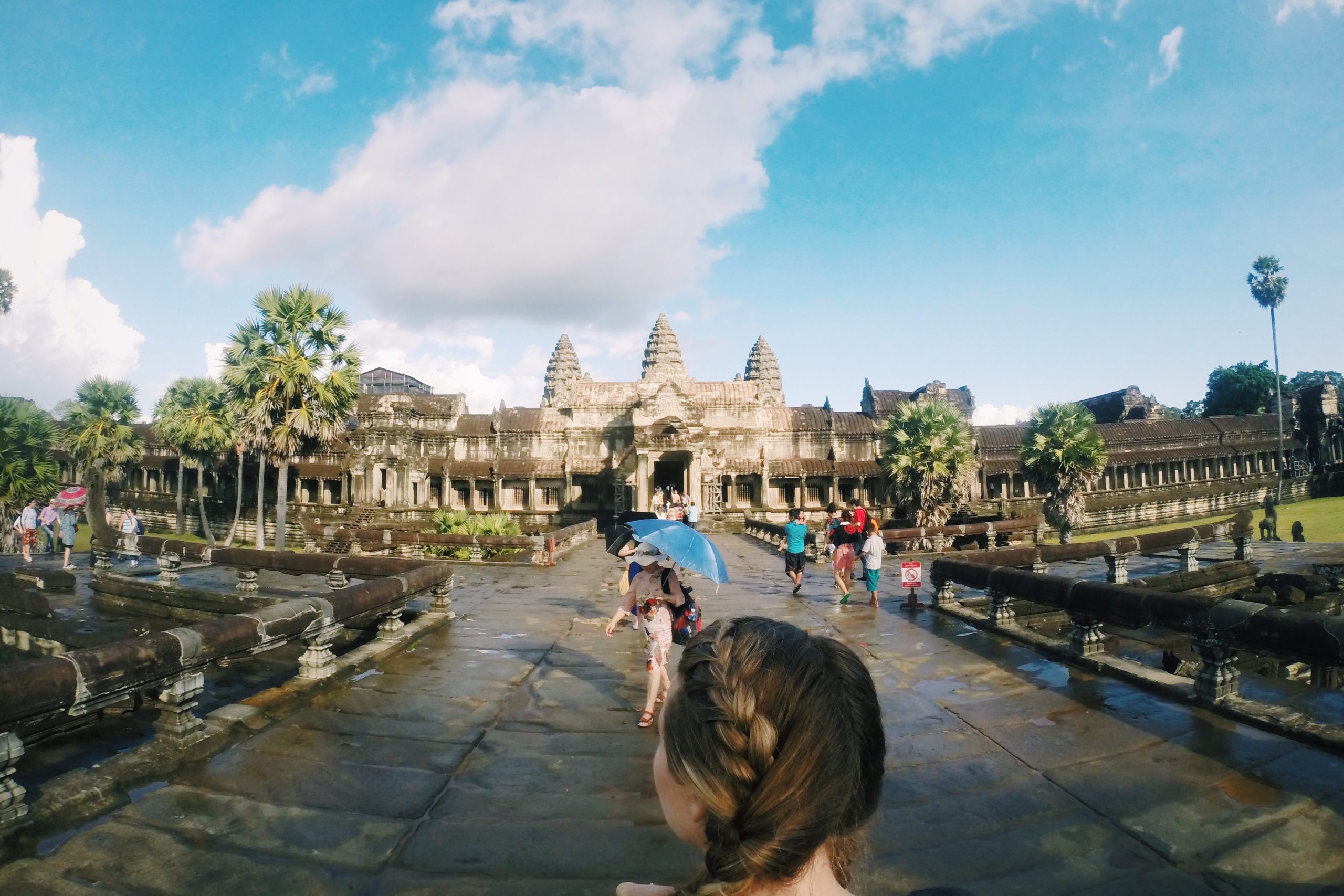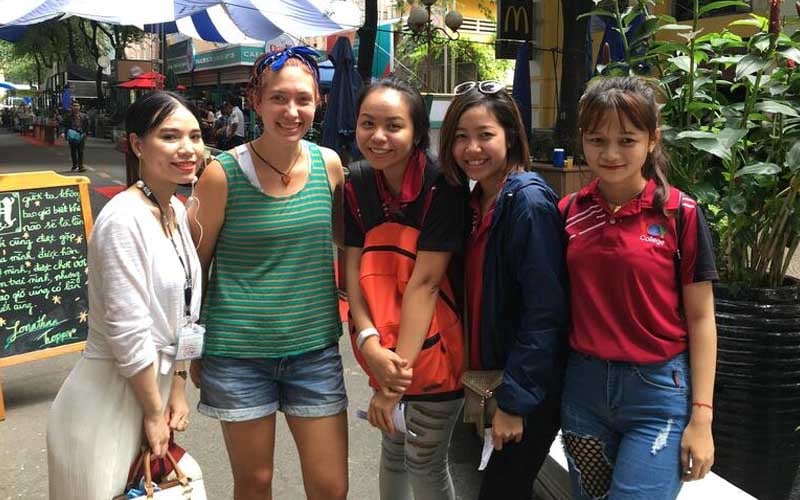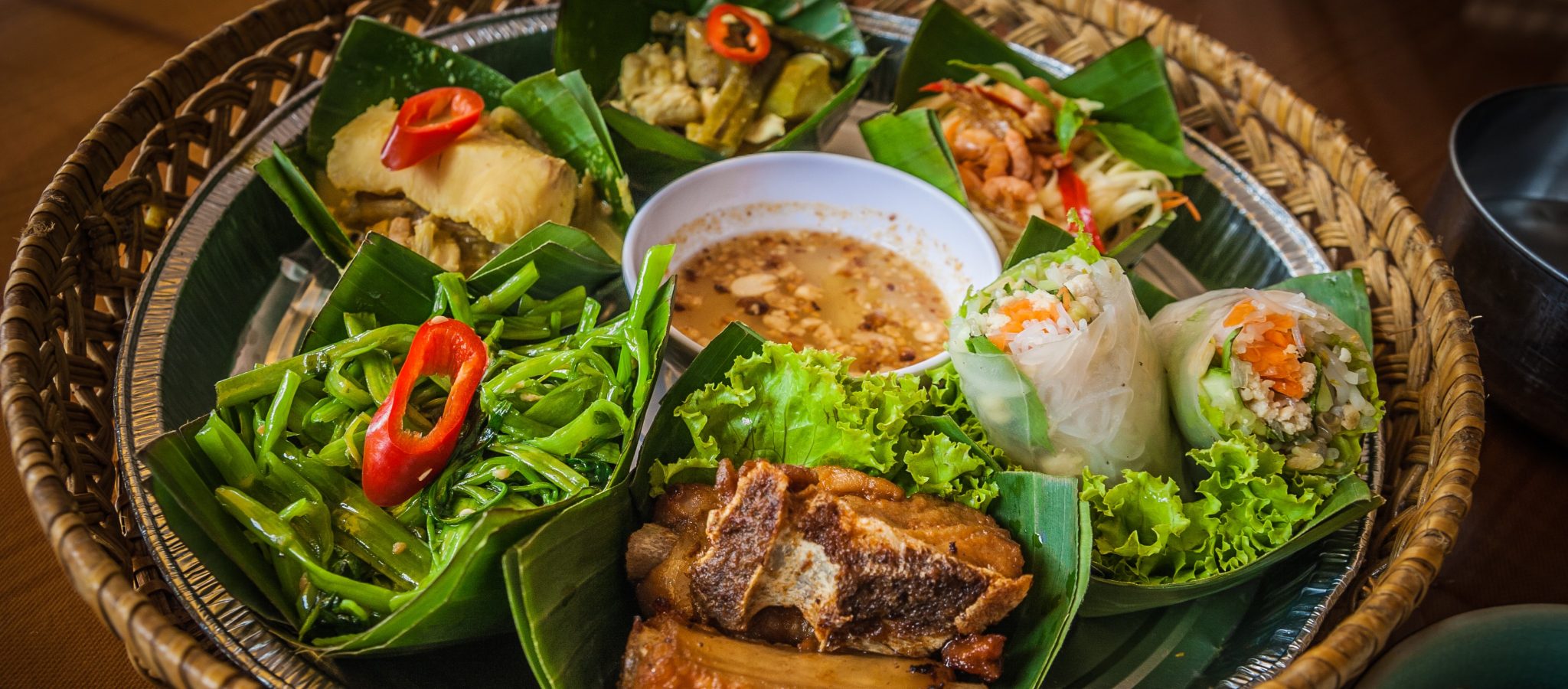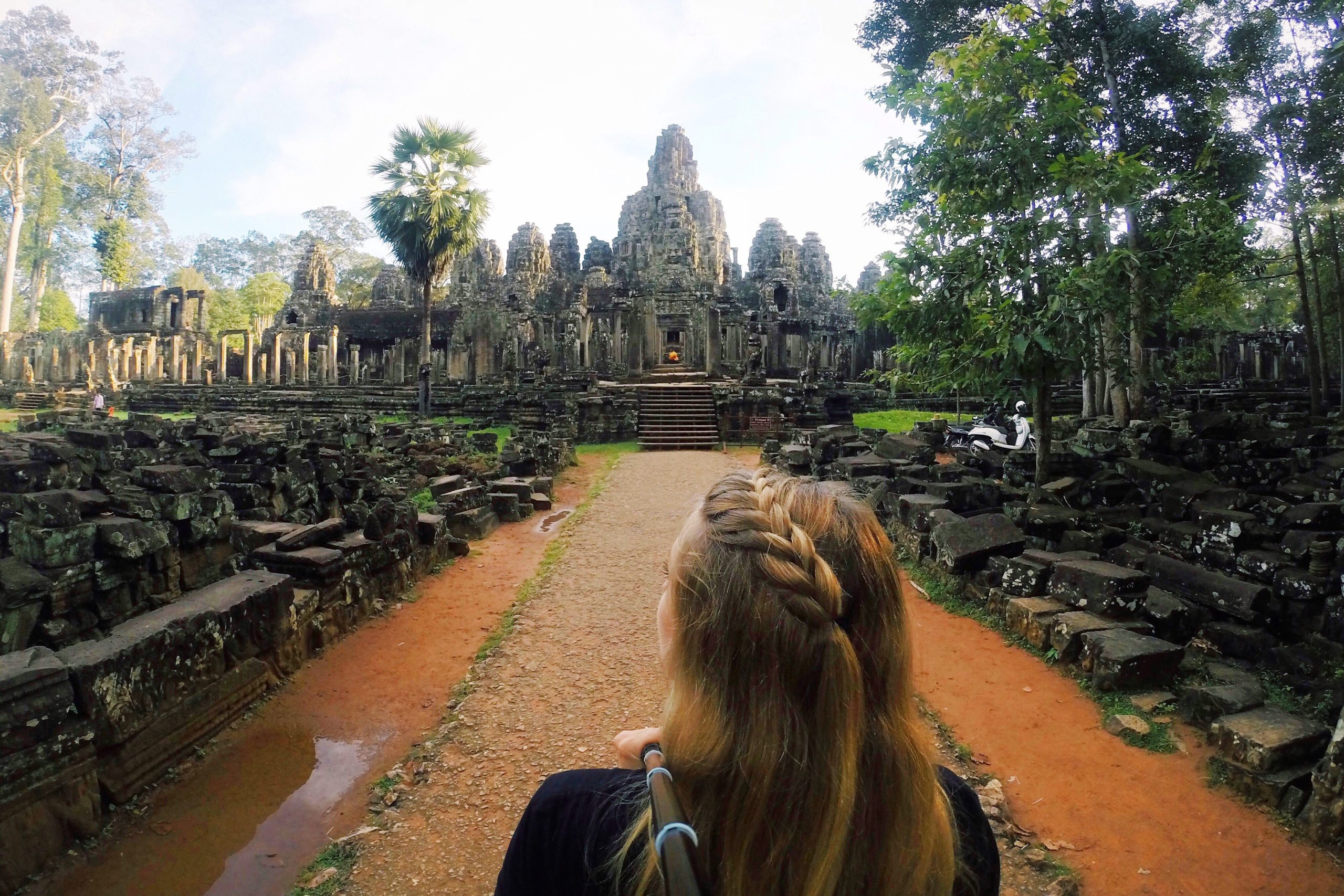South African in Cambodia: Top Things to Know

Introduction
Welcome to the cultural exploration journey comparing South Africa and Cambodia! In this blog, we delve into the various aspects of life in these two diverse countries, shedding light on the social norms, communication challenges, culinary delights, safety considerations, and cost of living differences.
Whether you are a South African planning to visit Cambodia or simply curious about the contrasts between these nations, this article aims to provide you with valuable insights to navigate through the unique cultural landscapes.
Social Etiquette
- Greetings: In Cambodia, a slight bow or a palms-together gesture called "sampeah" is customary as a sign of respect.
- Personal Space: Unlike South Africans, who are more used to physical contact, Cambodians generally maintain a respectful distance when interacting with others.
- Dress Code: Both countries value modesty; however, South Africans may opt for western attire, while traditional clothing like "sarongs" is common in Cambodia.
Traditional Customs
- Hospitality: Cambodians are known for their warm hospitality and generosity towards guests, a trait shared by many South Africans.
- Festivals: While South Africa celebrates events like Heritage Day and Freedom Day, Cambodia revels in festivals like Khmer New Year and Water Festival, showcasing their rich cultural heritage.
Join us as we further explore language barriers, culinary delights, health considerations, and financial aspects that shape the contrasting yet intriguing fabric of South Africa and Cambodia. Let's embark on this enlightening journey together!
Cultural Differences Between South Africa and Cambodia
Social Etiquette
Navigating social interactions in South Africa and Cambodia involves understanding and respecting the unique customs and norms of each country. Here are some key differences in social etiquette:
- Greetings: In South Africa, a firm handshake and direct eye contact are common, reflecting a sense of confidence and respect. Meanwhile, Cambodians greet with a bow or a "sampeah," showing reverence and humility.
- Communication Style: South Africans tend to be more direct and expressive in their communication, while Cambodians value subtlety and indirectness to maintain harmony.
- Table Manners: In Cambodia, it is polite to leave a little food on your plate to show you are satisfied, whereas in South Africa, finishing your meal indicates enjoyment.
Traditional Customs
The traditional customs of South Africa and Cambodia reflect their rich histories and cultural heritage. Here are some notable differences in their customs:
- Celebrations: South Africa celebrates events like Heritage Day with braais (barbecues) and traditional attire, embracing the country's diverse cultural roots. On the other hand, Cambodia's traditional customs are exemplified in the lavish festivities of Buddhist ceremonies and New Year celebrations.
- Family Structure: South African families are often nuclear or extended, placing emphasis on collective decision-making and support. In contrast, Cambodian families typically have a more hierarchical structure, with elders holding significant authority and respect.
These distinctions in social etiquette and traditional customs offer a fascinating insight into the unique characteristics that shape the cultural fabric of South Africa and Cambodia. By appreciating and adapting to these differences, visitors can enrich their travel experiences and foster greater understanding and respect for diverse cultures.

Language Barrier and Communication Tips
Communication plays a pivotal role in bridging cultural gaps between South Africa and Cambodia. Understanding the languages spoken and mastering some common phrases can significantly enhance your interactions in both countries.
Common Languages Spoken in Cambodia
- Khmer: The official language of Cambodia, spoken by the majority of the population. Learning basic Khmer phrases can greatly facilitate communication and show respect for the local culture.
- English: English is widely used in urban areas and tourist destinations in Cambodia, making it easier for travellers to navigate and communicate effectively.
- French: While not as prevalent as Khmer or English, French is still spoken in Cambodia, particularly among older generations and in official capacities.
Useful Phrases for South Africans
Mastering a few key phrases in the local language can go a long way in fostering meaningful connections with the people you meet during your travels. Here are some useful phrases for South Africans visiting Cambodia:
- "Sua s'dei" (Hello): A friendly greeting to start conversations.
- "Somtoh" (Sorry): Useful for apologizing or expressing regret.
- "Ava oorn s'sday" (Thank you): Show appreciation for gestures or assistance.
- "Liah kh'nyom chraoy" (Excuse me): Polite way to get someone's attention or navigate through crowded places.
- "Chouy ban dai te?" (How much does it cost?): Handy for shopping or negotiating prices.
By familiarising yourself with these common languages and phrases, you can navigate the language barrier more effectively and engage with the local communities in a respectful and meaningful manner, enhancing your overall cultural experience in Cambodia.

Cuisine and Food Culture
Embarking on a culinary adventure is an integral part of immersing oneself in the culture of a new country. Discovering the flavours and culinary traditions of Cambodia offers a unique insight into the local way of life and provides a delightful sensory experience.
Popular Cambodian Dishes to Try
Cambodian cuisine is a blend of aromatic herbs, spices, and fresh ingredients that create a harmonious balance of flavours. Here are some must-try dishes during your visit to Cambodia:
- Amok: A traditional Khmer dish made with fish, coconut milk, and spices, steamed in banana leaves for a fragrant and flavorful treat.
- Bai Sach Chrouk: A breakfast staple consisting of grilled pork served with rice and a side of pickled vegetables, offering a perfect blend of savory and tangy flavors.
- Nom Banh Chok: A refreshing dish of rice noodles topped with a fish-based gravy and fresh vegetables, commonly enjoyed for breakfast or as a light meal.
- Khmer Red Curry: A spicy and rich curry made with coconut milk, lemongrass, and local spices, showcasing the bold flavors of Cambodian cuisine.
Differences in Taste Preferences
South African and Cambodian taste preferences can vary based on cultural influences and regional ingredients. Some key differences include:
- Spices and Heat: Cambodian cuisine tends to be milder in heat compared to the bold spices and fiery flavours often found in South African dishes.
- Ingredients: While South African cuisine embraces a variety of meats like beef, lamb, and game, Cambodian dishes often feature seafood and freshwater fish as key ingredients.
- Texture and Presentation: Cambodian cuisine values light and fresh textures, with an emphasis on colourful, artfully presented dishes that appeal to both the eyes and the palate.
Exploring the culinary landscapes of South Africa and Cambodia offers a delightful sensory journey, showcasing the diverse flavors, textures, and cultural influences that shape the unique food cultures of these two nations. Immerse yourself in the vibrant world of Cambodian cuisine and savour the rich tapestry of flavours that define its gastronomic identity.

Safety and Health Considerations
Ensuring your well-being and safety is paramount when exploring new destinations like South Africa and Cambodia. Understanding the healthcare system and safety tips specific to each country can help you navigate potential risks and enjoy a worry-free travel experience.
Healthcare System in Cambodia
- Public Healthcare: Cambodia's public healthcare system is improving but may still face challenges, such as limited resources and infrastructure in rural areas. It is advisable to seek medical care in private facilities in urban centers for better quality and faster service.
- Medical Facilities: Major cities like Phnom Penh and Siem Reap have well-equipped hospitals and clinics that cater to both locals and expatriates, offering a range of medical services.
- Health Precautions: Visitors should be cautious of water and food hygiene to avoid common travel-related illnesses like traveller's diarrhoea. It is recommended to drink bottled water and eat at reputable establishments.
Safety Tips for South Africans
While both South Africa and Cambodia are known for their unique attractions and warm hospitality, it is essential to be mindful of safety precautions to ensure a smooth and secure journey. Here are some safety tips for South Africans visiting Cambodia:
- Street Safety: Exercise caution in crowded areas and beware of petty theft, especially in tourist hotspots. Keep valuables secure and be vigilant in unfamiliar surroundings.
- Transportation: Use reputable transportation services and avoid travelling alone at night. Always negotiate fares in advance when using tuk-tuks or taxis.
- Cultural Sensitivity: Respect local customs and traditions to avoid unintentional offences. Dress modestly when visiting religious sites and be mindful of cultural sensitivities during interactions with locals.
By familiarizing yourself with the healthcare system in Cambodia and adhering to safety guidelines tailored for South African travellers, you can safeguard your health and well-being while immersing yourself in the rich cultures and scenic landscapes of these captivating destinations.
Cost of Living and Currency Exchange
Understanding the cost of living and currency exchange rates is essential when planning your travels to South Africa and Cambodia. By comparing expenses and knowing the best ways to exchange currency, you can effectively manage your budget and financial transactions during your stay in these countries.
Comparison of Costs between South Africa and Cambodia
- Accommodation: In general, accommodation costs in Cambodia, especially in tourist areas like Siem Reap, tend to be lower compared to South Africa's popular destinations.
- Food and Dining: Dining out in Cambodia can be more affordable, with street food stalls offering delicious meals at budget-friendly prices. South Africa offers a wide range of dining options catering to various budgets.
- Transportation: Public transportation in Cambodia, such as tuk-tuks and motorcycle taxis, can be cheaper than in South Africa. However, renting a car in South Africa may provide more flexibility for exploring the country.
Best Ways to Exchange Currency
Efficient currency exchange is crucial to ensuring you get the best value for your money while travelling. Here are some tips on exchanging currency in South Africa and Cambodia:
- ATMs: Utilize ATMs to withdraw local currency in Cambodia for competitive exchange rates. Ensure your bank cards are enabled for international transactions.
- Currency Exchange Offices: In South Africa, currency exchange can be done at banks, airports, or authorized exchange offices for convenience and security.
- Credit Cards: Credit cards are widely accepted in both countries, especially in urban areas and tourist spots. However, be mindful of additional fees for foreign transactions.
By carefully assessing the cost of living differences and familiarizing yourself with efficient currency exchange methods, you can effectively manage your finances and make the most of your travel experiences in South Africa and Cambodia. Planning ahead and staying informed about financial considerations can contribute to a hassle-free and enjoyable journey.

Conclusion
As we conclude our exploration of the cultural nuances, culinary delights, safety considerations, and financial aspects of South Africa and Cambodia, it becomes evident that each country offers a unique and enriching experience for South African travellers. By comparing the living conditions and lifestyle differences, individuals can make informed decisions when embarking on their adventures to these diverse destinations.
Comparison of Living in South Africa and Cambodia for South Africans
- Cultural Diversity: While South Africa boasts a rich tapestry of cultures and languages, Cambodia's cultural heritage shines through its ancient traditions and customs, offering a new perspective for South African visitors.
- Culinary Adventures: South Africans can indulge in hearty dishes and braais back home, but exploring Cambodian cuisine introduces them to a delicate fusion of flavors and aromatic spices, expanding their gastronomic horizons.
- Safety and Health: Both countries present unique safety concerns and healthcare systems that require attention. South Africans should adapt to local safety protocols and be aware of health precautions to ensure a smooth and secure travel experience.
- Financial Management: Understanding the cost of living variances and currency exchange methods is crucial for effective budgeting and financial planning when transitioning between South Africa and Cambodia.
In conclusion, South Africans venturing to Cambodia can look forward to immersing themselves in a captivating blend of ancient traditions, vibrant cultures, and mouth-watering cuisine.
By embracing the differences and similarities between these two countries, travellers can create lasting memories and foster a deeper appreciation for the global tapestry of diversity that unites us all. Embrace the cultural odyssey and relish in the transformative journey that awaits you in South Africa and Cambodia.
